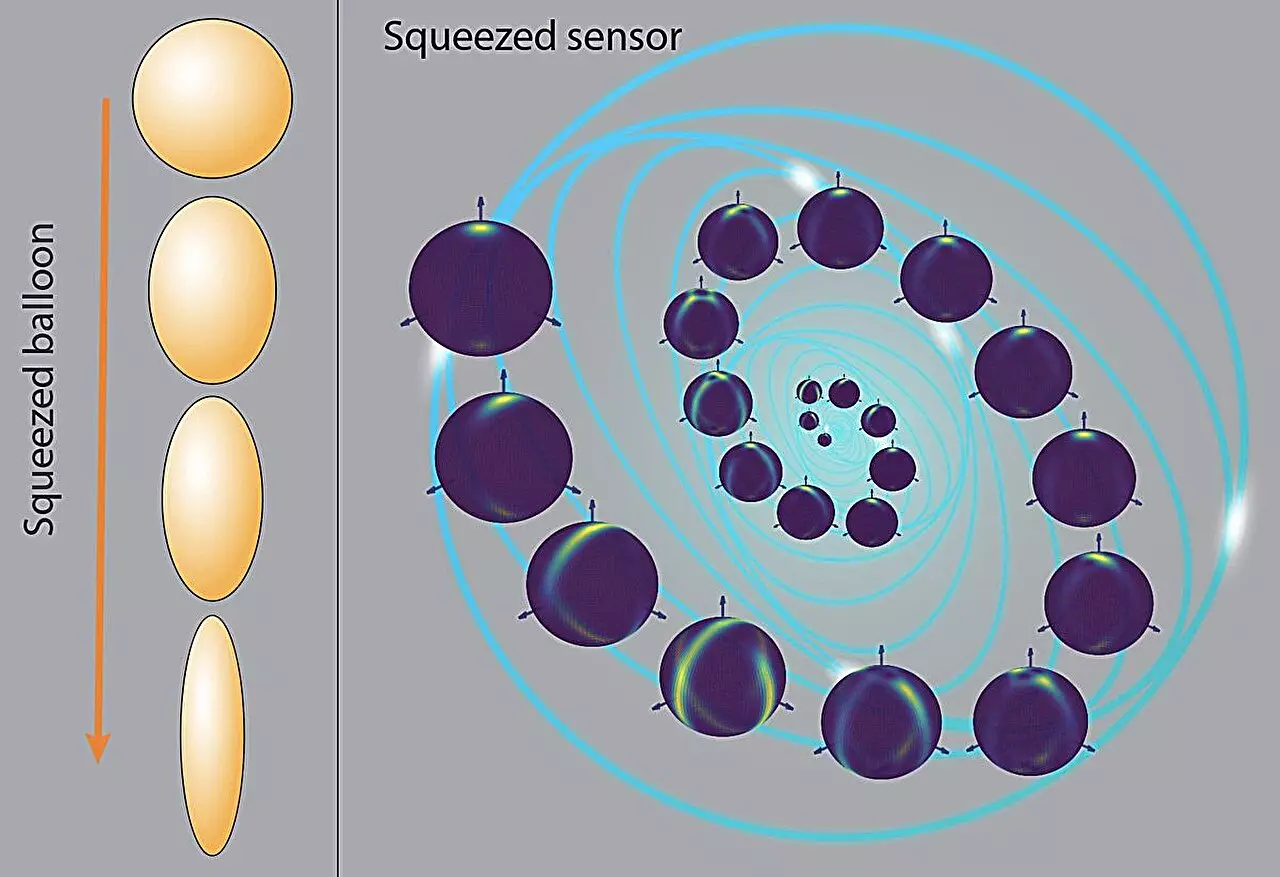Quantum mechanics continually challenges our understanding of the universe, revealing nuanced behaviors that defy classical logic. One of the intriguing phenomena in this domain is quantum squeezing, a process that alters the distribution of uncertainty within a system. This article delves into the essence of quantum squeezing, its theoretical framework, practical applications, and the insights from recent research that may revolutionize how we utilize quantum mechanics in technology.
At its core, quantum squeezing refers to the trade-off between uncertainties in complementary variables, such as position and momentum. These quantities are governed by Heisenberg’s uncertainty principle, which states that decreasing the uncertainty in one caused by precision measurements will inherently increase the uncertainty in the other. To visualize this, consider a balloon: when squeezed, its original shape is altered, resulting in increased dimensions in some areas while other dimensions shrink. This analogy encapsulates the essence of quantum squeezing—where the total uncertainty remains constant, only the way it is manifested is altered.
The significance of this quantum phenomenon is substantial. By squeezing uncertainties, it becomes possible to enhance the precision of measurements related to one variable significantly. This principle has already yielded promising results in various applications, including atomic clocks, where measurement of time is refined to unprecedented levels of accuracy. The shift toward focusing on a single measurable aspect, however, reveals a limitation when dealing with complex systems where multiple variables must be taken into account simultaneously.
Recent advancements in the field, specifically a study published in *Physical Review Research* by Dr. Le Bin Ho of Tohoku University, dive deep into improving measurement precision in multifaceted quantum systems. The research explores a scenario in which three-dimensional magnetic fields interact with identical two-level quantum systems, pushing the boundaries of what quantum measurements can achieve.
Dr. Ho’s study illuminates the intricate mechanisms that allow quantum squeezing to operate under conditions that, until now, posed significant challenges to researchers. Previous investigations often grappled with the complexities of achieving full quantum entanglement in only one dimension. However, Ho’s work provides both theoretical and numerical insights essential for attaining maximum precision in measurements across multiple dimensions. The implications of this research are vast, as improved quantum measurements can lead to technological breakthroughs across various fields.
The ramifications of enhancing quantum measurement precision are staggering. In quantum imaging, advancements can lead to sharper, more detailed pictures, greatly benefiting fields like medical imaging or remote sensing. Quantum radar could revolutionize object detection, opening new possibilities for security and surveillance technologies. Additionally, atomic clocks that are even more precise than current models could enhance GPS accuracy and other time-dependent applications, fundamentally improving navigation systems globally.
In biological sciences, the implications extend to developing more sensitive biosensors capable of early disease detection and more accurate molecular measurements. Dr. Ho noted that better measurement techniques could influence biophysics, suggesting that enhancements in magnetic resonance imaging (MRI) technology could one day lead to breakthroughs in understanding complex biological processes.
Looking ahead, Dr. Ho emphasizes the need for continued exploration into how various types of noise may affect quantum squeezing mechanisms. Understanding this aspect will be vital to harnessing the full potential of quantum technologies and ensuring their reliability in complex real-world scenarios.
The exploration of quantum squeezing by researchers like Dr. Le Bin Ho creates a pathway toward a deeper understanding of measurement precision in quantum systems. As quantum technology continues to develop, the research findings highlight an exciting frontier where science fiction could soon become reality. The cross-disciplinary applications span numerous fields, from enhanced imaging techniques in healthcare to advanced navigation systems and beyond, promising a future enriched by the power of quantum mechanics. The ongoing quest to unlock these quantum mysteries paves the way for a new technological revolution, one where precision goes hand in hand with innovation.


Leave a Reply